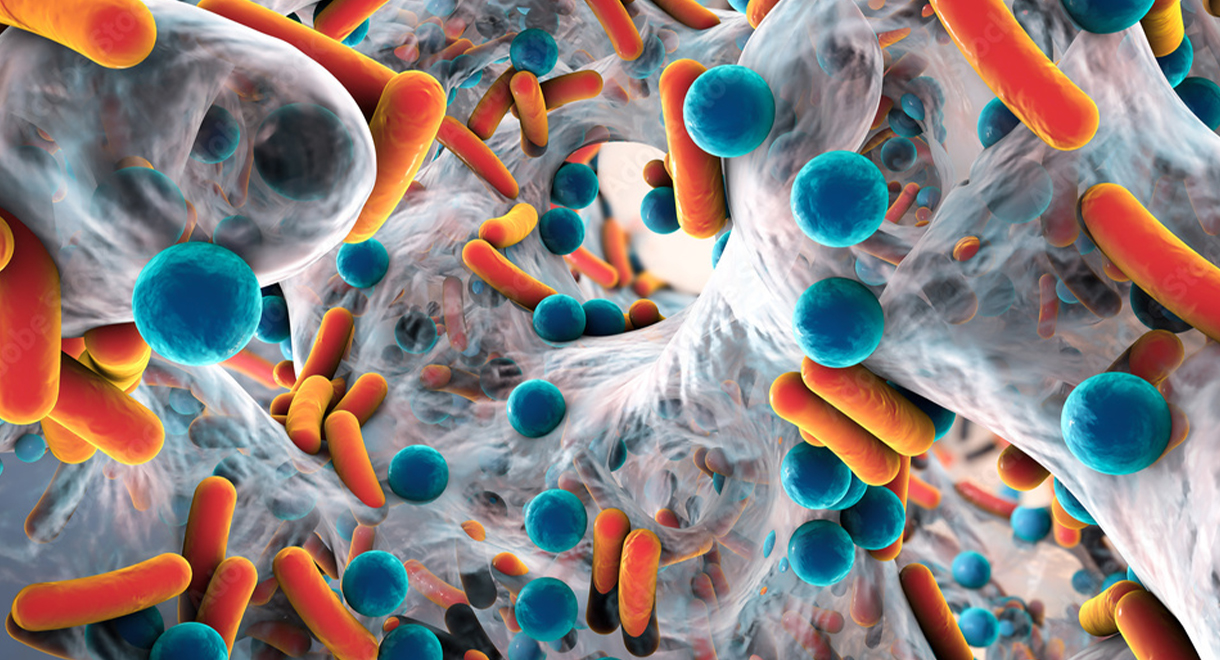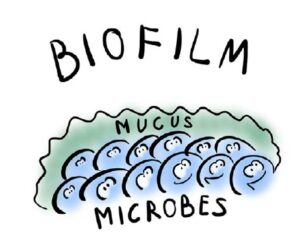

Biofilms And Chronic Infections
Infections persist and become chronic because microorganisms (viruses, bacteria, and fungi) make themselves a protective external layer called a biofilm. These microorganisms survive and hide in body cavities and surfaces through the formation of biofilms. The most successful persistent forms of life on earth are considered to be biofilms. Biofilms are microbial communities surrounded by a layer of mucus like material, which makes it hard for the immune system to fight them. Biofilms are resistant to antiviral and antibacterial drugs and to the immune defences of the person infected. 
Some viruses form complex biofilm like structures, similar to bacterial biofilms. These biofilm structures protect viruses from the immune system and enable them to spread more easily from cell to cell. Viral biofilms are likely to be a major method of propagation for some viruses.
By removing the viral biofilm from the surface of the infected cells, researchers achieved an 80% reduction in infection rates of the retrovirus HTLV-1.
NAC has been extensively researched for its effectiveness in inhibiting biofilm formation and in destroying developed biofilms. Studies show a role for NAC in the treatment of biofilms, with excellent safety and effectiveness. NAC has shown good properties in combating persistent antibiotic resistant bacterial infections and dissolving the biofilm matrix. NAC has been shown to help the body fight viral infections and inhibited the replication of seasonal human influenza A viruses.
Drug resistant chronic or recurrent infections such as Helicobacter Pylori, sinusitis, middle ear infections, bronchiectasis, gastrointestinal, and urinary tract infections etc, usually have well developed biofilms. Biofilm protected bacteria can be up to a thousand times more resistant to treatment and the host's own immune defences. Most refractory infections (i.e., unresponsive to medical treatment) are attributable to biofilm colonies. Biofilm may spread into uninfected areas and the cycle repeats thus worsening the infection.
Dental plaque is a form of biofilm and NAC is a therapy used as an antiplaque and bacteriostatic agent for managing chronic dental decay.
Natural substances which can disrupt biofilms include:
- Berberine
- Ellagic acid (e.g. from pomegranate)
- Proteolytic enzymes such as Serrapeptase
- D Mannose and Cranberry for biofilms in urinary tract infections
- Oregano
- Horseradish
- Garlic and onions
- NAC which is the most powerful of all especially for old or mature biofilms
NAC is very underutilized as a therapeutic agent in chronic persistent infections which have previously resisted standard antimicrobial treatments.
NAC and Selenium work together
Selenium acts in the body as an antioxidant, which neutralizes toxic substances. Selenium is required for antioxidant enzyme systems in the body to work efficiently and the most important one is glutathione.
When it comes to successfully fighting any viral infection, it is critical that people have adequate amounts of total body selenium.
Know someone who might benefit from this article? Share it!
Need Help?
1-888-75-LIVER
Monday to Friday, 9:00 am to 5:00 pm MST
100%
Satisfaction Guaranteed
If it’s faulty or wrongly described, we’ll replace it.










